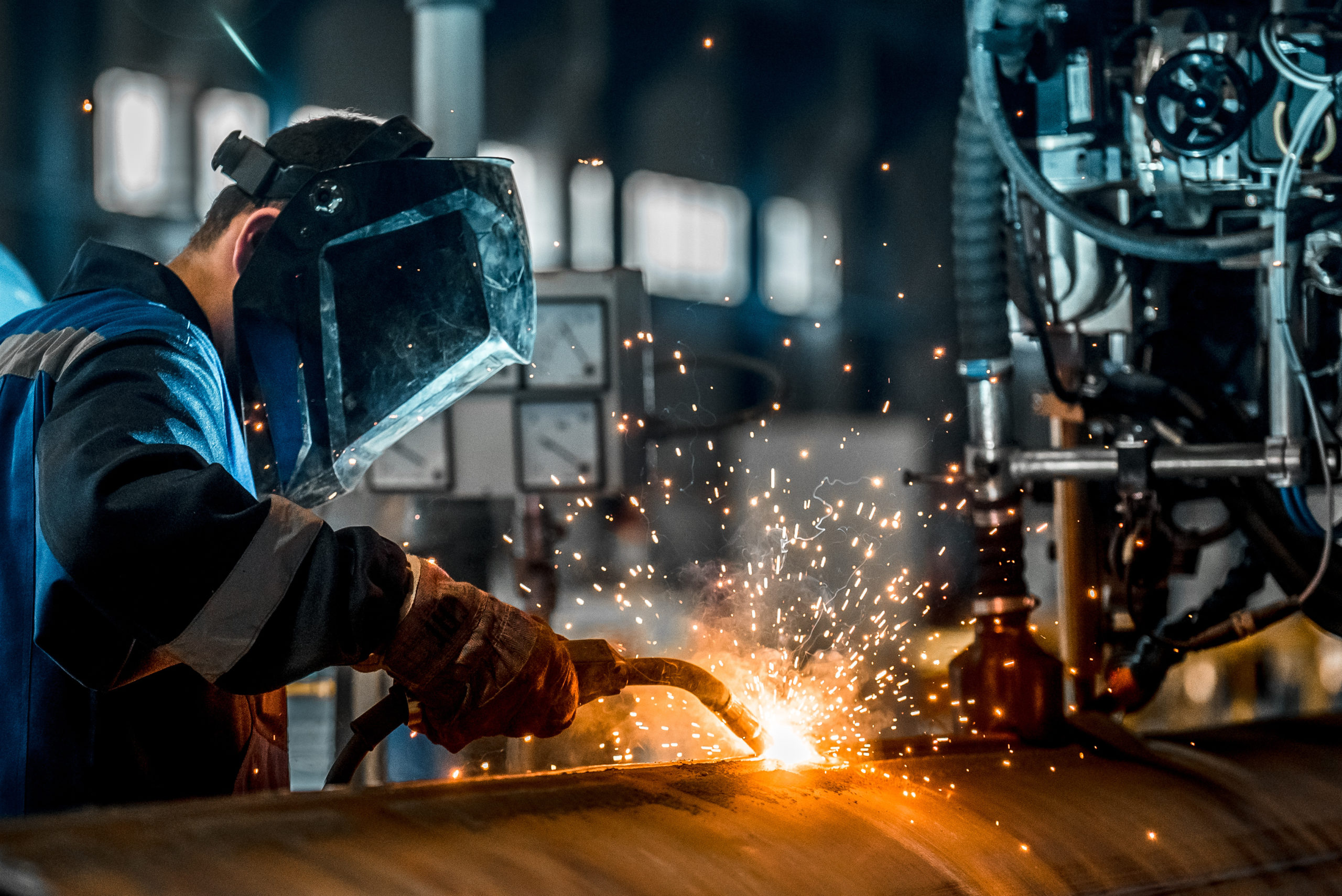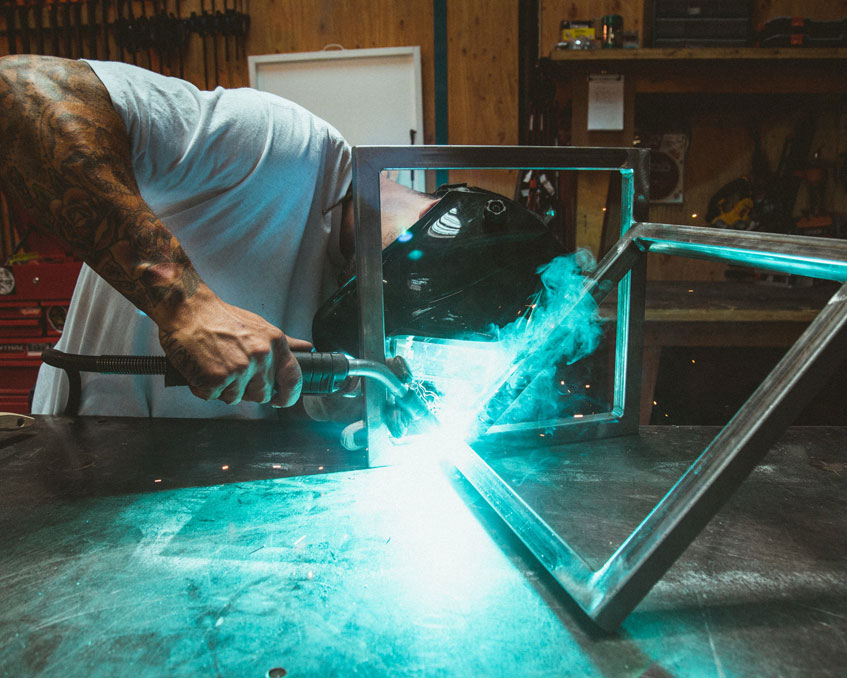All Regarding Welding: Trick Insights Into Techniques and Ideal Practices for Success
Welding includes a range of techniques, each fit for specific products and applications. Comprehending these approaches, such as GMAW, SMAW, and TIG, is vital for achieving ideal results. The right tools and security practices can not be neglected. As preparation and troubleshooting play vital duties in the welding process, mastering these components can significantly enhance the high quality of the last item. What are the vital elements that assure an effective weld?
Understanding Different Welding Strategies
Welding strategies include a selection of techniques, each matched to particular applications and products. Amongst one of the most common techniques are Gas Metal Arc Welding (GMAW), Protected Metal Arc Welding (SMAW), and Tungsten Inert Gas Welding (TIG) GMAW, additionally referred to as MIG welding, is preferred for its rate and versatility, making it excellent for thin products. SMAW, or stick welding, is favored for its simplicity and efficiency in exterior settings, especially with thicker metals. TIG welding supplies precision and control, making it appropriate for elaborate job and non-ferrous metals (Belgrade). Each strategy has its distinct benefits and factors to consider, enabling welders to pick the best technique based on the project's requirements, material type, and desired results. Comprehending these techniques is important for effective welding
Crucial Welding Equipment and Devices
While various welding strategies call for certain skills, the appropriate tools and devices are just as crucial for attaining quality outcomes. Vital welding equipment includes welding devices, which differ depending upon the method-- such as MIG, TIG, or stick welding. Safety equipment, including gloves, aprons, and headgears, guarantees safety and comfort during the process. Furthermore, fixtures and clamps aid protect products in area, guaranteeing precision in welds. Consumables like welding poles, wire, and securing gas are also vital elements that influence the high quality of the weld. Devices such as cutters and grinders help with surface preparation and post-weld completing, adding to a professional result. Investing in high-quality devices inevitably boosts the performance and performance of welding jobs.
Security Practices in Welding
Appropriate safety and security methods are necessary in the welding sector to safeguard workers from potential dangers. Welders should use ideal individual safety devices (PPE), consisting of headgears with appropriate shading, gloves, and flame-resistant apparel. Appropriate air flow is vital to minimize direct exposure to hazardous fumes and gases generated during the welding process. Furthermore, workers ought to be learnt the right handling of welding equipment to prevent accidents. Fire safety measures, such as maintaining flammable products far from the welding location and having fire extinguishers conveniently offered, are required. Normal examinations of tools and work spaces can help determine possible dangers prior to they lead to mishaps. By adhering to these safety and security methods, welders can create a much safer working environment and lessen threats related to their profession.
Preparing Products for Welding
Preparing materials for welding is a vital action that substantially influences the quality and stability of the final product (Belgrade Welding). Correct prep work entails cleaning up the surface areas to get rid of contaminants such as oil, corrosion, and dust, which can jeopardize the weld. Methods such as grinding, fining sand, or utilizing solvents are generally used to achieve a tidy surface. Additionally, guaranteeing that the materials fit with each other well is crucial; voids can cause weak welds. It's likewise important to think about the alignment and positioning of the parts, as this will affect the ease of welding and the last end result. Finally, picking the suitable filler material and making certain compatibility with the base steels is vital for attaining strong, resilient welds
Tips for Getting High-Quality Welds
Attaining top quality welds calls for interest to detail and adherence to best techniques throughout the welding procedure. Proper joint preparation is necessary, guaranteeing surfaces are clean and totally free from impurities. Selecting the appropriate filler product and welding strategy based upon the base metals is vital for optimal bonding. Keeping consistent traveling speed and angle while welding can promote and avoid issues harmony. Furthermore, controlling warm input is important; too much warmth can bring about warping and weakened joints. If required, regularly examining the welds throughout the procedure permits for instant changes. Lastly, using suitable post-weld treatments, such as cleansing and anxiety relief, can boost the longevity and integrity of the weld, ultimately making sure an effective outcome.
Troubleshooting Common Welding Issues
Welding typically provides challenges that can affect the quality and honesty of the end product. Common problems such as porosity, inconsistent weld grains, and overheating can develop, each needing certain troubleshooting methods. Recognizing these troubles is necessary for welders to enhance their abilities and attain perfect outcomes.
Porosity Problems Clarified
Although porosity can commonly be ignored, it remains a vital concern in welding that can endanger the stability of a finished product. Porosity describes the existence of little gas pockets within the weld grain, which can lead and compromise the joint to early failing. This trouble typically emerges from impurities, dampness, or incorrect shielding gas insurance coverage during the welding procedure. To minimize porosity, welders must confirm that the base materials are dry and tidy, utilize ideal securing gases, and keep consistent welding parameters. Routinely examining the devices and setting can also assist determine possible issues before they show up in the weld. Addressing porosity properly is necessary for accomplishing strong, sturdy welds that fulfill top quality criteria.

Irregular Weld Beads
Irregular weld grains can substantially influence the quality and stamina of a completed item. Different elements add to this problem, including incorrect travel speed, inaccurate amperage settings, and inconsistent electrode angles. When the welder relocates as well quickly, a bead may show sites up narrow and do not have penetration, while relocating also gradually can create extreme accumulation. In addition, utilizing the wrong amperage can result in either damaging or too much spatter, both of which concession weld honesty. The welder's technique, such as inconsistent lantern activity, can likewise result in unequal bead appearance. To reduce these issues, welders need to concentrate on keeping consistent, controlled movements and making certain correct devices setups to achieve harmony in their welds. Consistency is vital to achieving strong and reputable welds.
Overheating and Warping Issues
Excessive heat during the welding process can bring about substantial overheating and contorting problems, affecting the architectural stability of the work surface. These troubles frequently materialize as distortion, which can compromise alignment and fit-up, making additional setting up challenging. Aspects arcweld adding to overheating consist of the choice of welding criteria, such as voltage and travel speed, as well as the kind of material being welded. To alleviate these concerns, welders need to maintain regular traveling speed and appropriate warmth input while keeping an eye on the work surface temperature level. Additionally, preheating or post-weld heat treatment can help ease stresses caused by quick cooling - Montana Mobile Welding and Repair Belgrade Welding. Regular assessment and adherence to ideal techniques are vital in protecting against overheating and making sure the longevity and reliability of bonded structures
Often Asked Inquiries
What Are the Occupation Opportunities in the Welding Sector?
The welding industry provides diverse profession opportunities, including settings as welders, designers, educators, and assessors. Professionals can work in production, building, aerospace, and auto markets, profiting from strong demand and competitive wages in numerous functions.
Just How Can I Boost My Welding Rate Without Compromising High Quality?
To boost welding rate without sacrificing top quality, one must exercise reliable strategies, maintain equipment, enhance settings, and boost hand-eye coordination. Routine training and seeking comments can additionally substantially add to accomplishing much faster, top quality welds.
What Certifications Are Offered for Welders?
Numerous accreditations exist for welders, consisting of those from the American Welding Culture (AWS), the National Center for Building Education And Learning and Research (NCCER), and various industry-specific companies. These qualifications boost employability and demonstrate skill effectiveness.
Just How Does Welding Influence the Features of Metals?
Welding affects the homes of metals by changing their microstructure, which can result in changes in stamina, ductility, and firmness. Warm input and cooling rates throughout the procedure considerably affect these material features.
Can I Bonded Dissimilar Metals Together?
